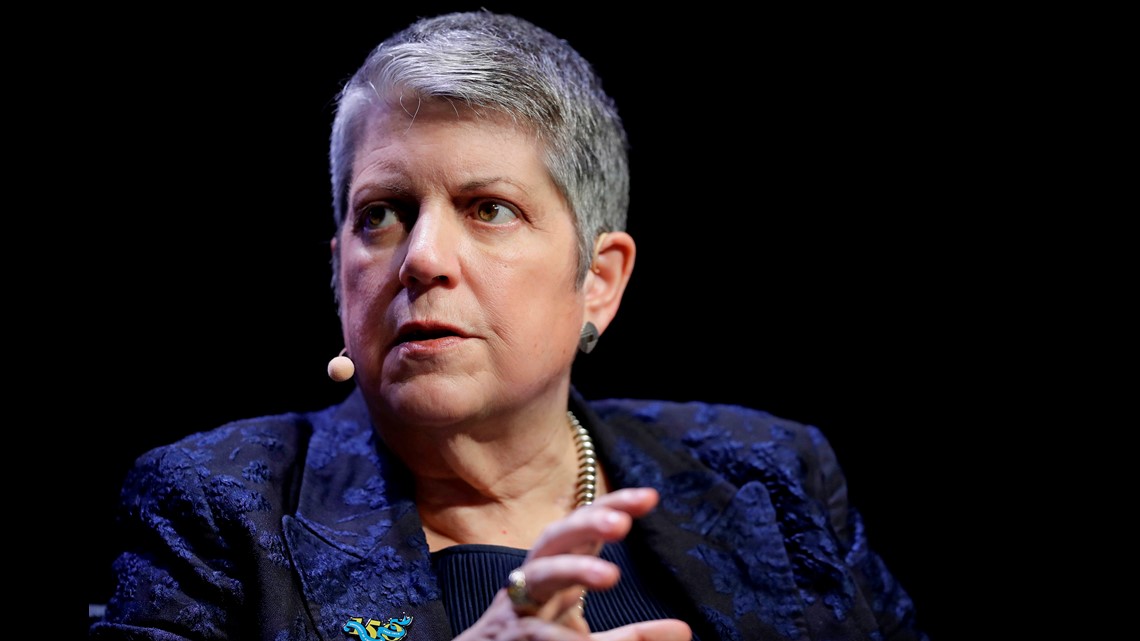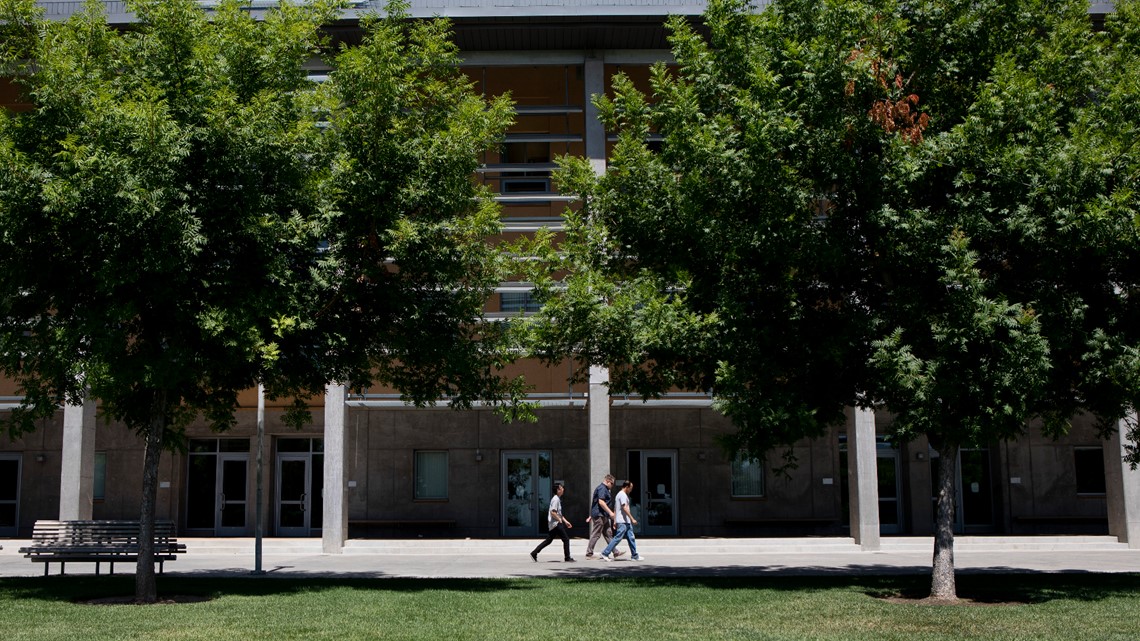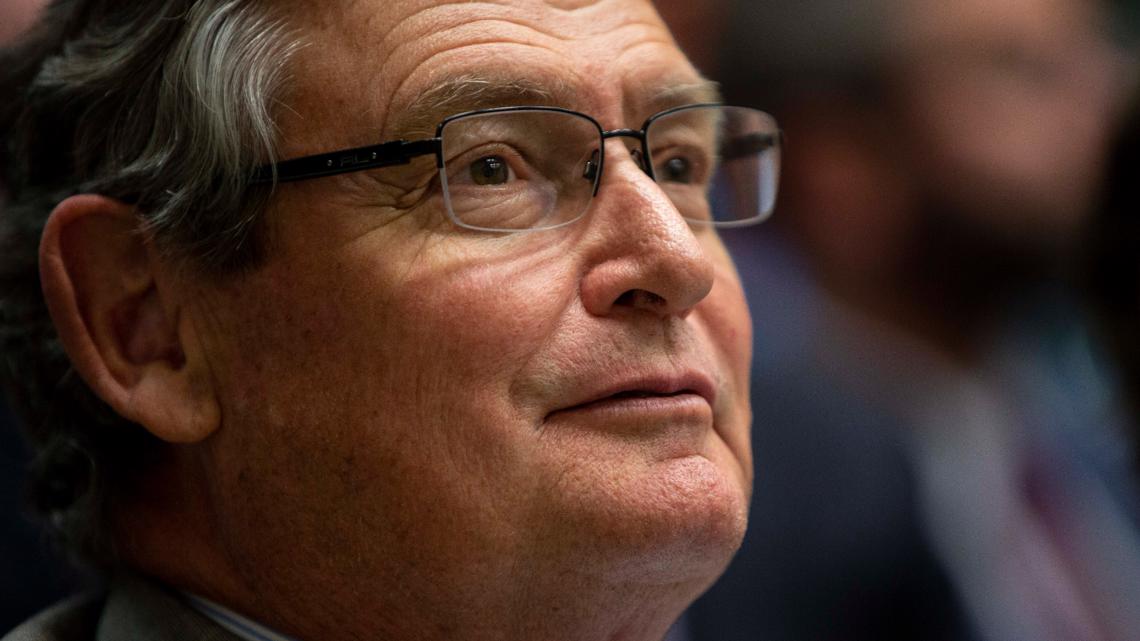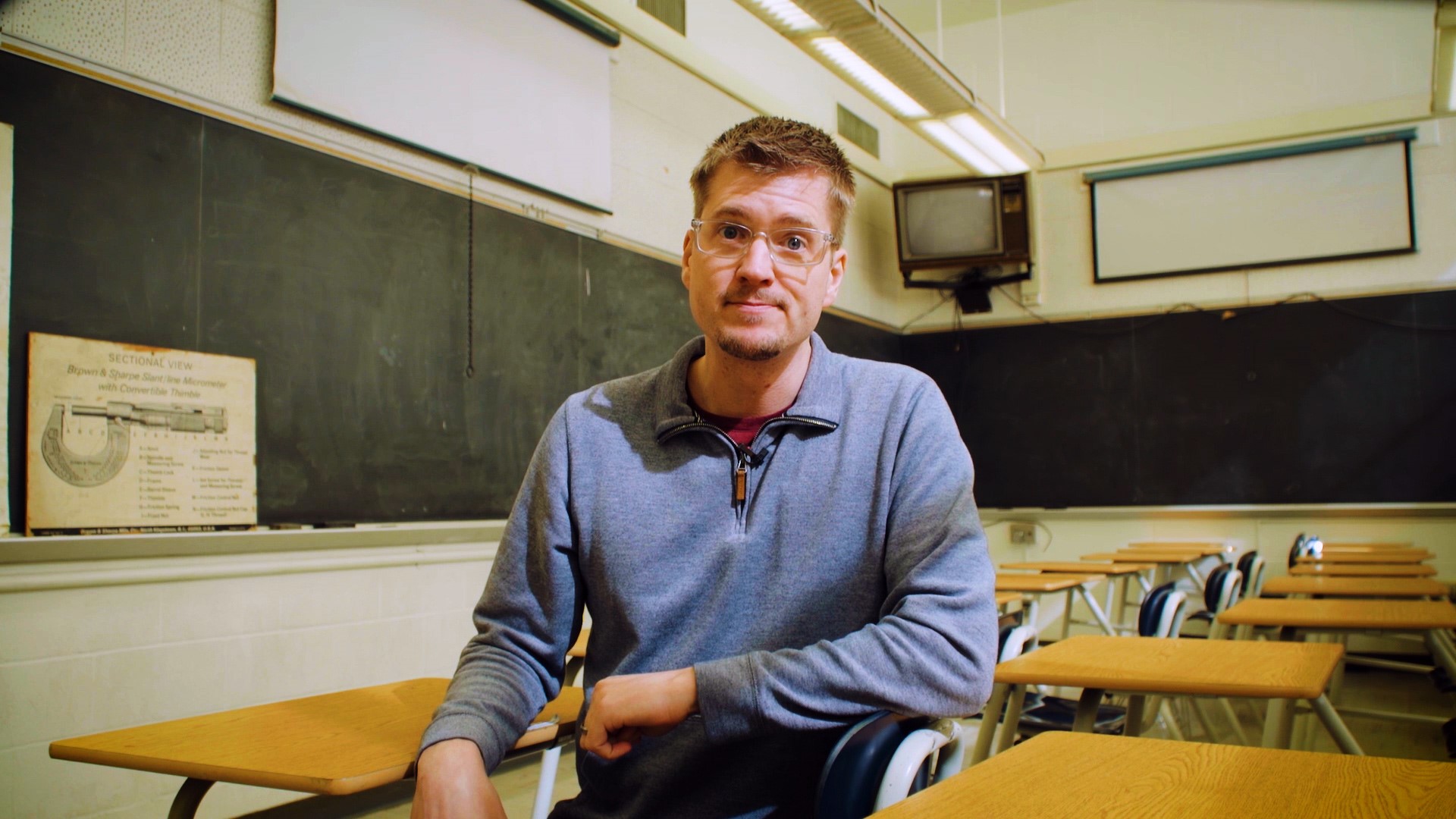SACRAMENTO, Calif. — UC Merced student Edwin Reyes saw the cars rolling in with visitors for a town hall meeting on the hiring of a new University of California president. As part of his on-campus job in the transportation department, he even helped prepare for the event.
But Reyes confessed that until the Jan. 31 meeting, he wasn’t sure what UC’s president actually does. “I wasn’t too aware that there’s a president, a chancellor, there are higher-ups and their decisions impact us,” said Reyes, an economics and psychology student from Inglewood who is the first in his family to attend college.
Yet opening UC’s doors to more students like Reyes — and the other primarily low-income, first-generation students that UC Merced serves — will be one of the key tasks facing whoever replaces president Janet Napolitano after she steps down in August.
With the scheduled departures of Napolitano and California State University Chancellor Tim White this year, California’s two four-year university systems are both choosing new leaders — leaders whose decisions will shape not only their institutions but the future of public higher education in the state and nationally. As the search committees wrap up a series of public hearings and move to select finalists, one theme has emerged perhaps more than any other: California needs leaders who can open up access to college for a larger, more diverse cross-section of the state’s residents.
“Any one of our nine (undergraduate) campuses has more Pell Grant recipients than all of the Ivy League put together,” UC San Diego chancellor Pradeep Khosla said at another town hall on that campus, referring to the federal grants for students of modest means. “So that’s the UC we know, that’s the UC we want to maintain, that’s the UC we want to grow.”
While broader factors like the state’s economy and demographic changes affect university leaders’ chances of success, they are also individuals whose personal stories can shape public perception of their institutions. A political heavyweight with experience as both a governor and a cabinet member in the Obama administration, Napolitano sometimes struggled to adapt to academia and win over state legislators. White speaks often of his experience as a first-generation college student, tearing up at a recent trustee meeting as he recalled being dropped off by his parents at Fresno State after transferring from community college and “to this day, feeling a bit like an outsider looking in.”


Both systems have been roiled recently by high-profile debates over admissions policy. UC is discussing whether to move away from requiring applicants to the prestigious research university’s campuses to submit the SAT or ACT — tests which critics argue unfairly advantage wealthy students, while posing a barrier to those who are black, Latino and Native American. At Cal State, the country’s largest four-year university system, trustees delayed a plan to require prospective students to take four years of high school math courses, amid concerns that those in poorer districts wouldn’t be able to access the necessary classes.
Sharpening admissions discussions: Neither system has enough space to meet demand. While freshman applications to UC have declined slightly in the past two years, tens of thousands of qualified students are still denied spots at their preferred Cal State and UC campuses each year, and those redirected to campuses with more space, like UC Merced, rarely enroll. California’s 1960 Master Plan for higher education, which tasked UC with serving the top one-eighth of the state’s high school graduates and Cal State the top one-third, has broken down as more students graduate ready to attend college.
“The Master Plan was phenomenally successful, but it was conceived when a smaller section of society was perceived to need higher education,” said Jay Sharping, an associate professor of physics at UC Merced. “I would like to see someone who can champion a new Master Plan…that can get us set up for the next 50 years.”
Marina Gorbis, executive director of the Institute for the Future, which advises universities on how to be forward-thinking, put it another way. Each university, she said, will have to answer the question, “Is it advancing economic mobility or perpetuating the current inequalities?”
A choice like Arizona State University president Michael Crow — mentioned as a contender for either the UC or CSU position — could increase access by creating online, flexible degree paths, as he has in Arizona, Gorbis said. Conversely someone with a focus on the liberal arts, she said, could create intimate spaces within the larger system for students to learn skills, like critical thinking and collaboration, that will differentiate humans from robots in the economy of the future.


A new UC president would oversee an operating budget of nearly $40 billion, ten campuses serving 284,000 undergraduate and graduate students, five medical centers and three national laboratories.
Cal State’s budget is a much smaller $7.2 billion, but it enrolls more than 480,000 students on 23 campuses.
The leader of either university will likely face increased calls for support from students and employees struggling with the state’s high cost of living. UC had no sooner settled labor contracts with service workers upset about outsourcing, when it this month faced a strike of graduate teaching assistants at its Santa Cruz campus demanding a cost of living increase to help them cope with rising rents.
Both universities, many at the hearings said, will need politically savvy leaders capable of working alongside students and faculty to coax more dollars out of the state Capitol. California is spending more per student on higher education than it did during the most recent recession, but less than it did 20 years ago.
“We’ve heard a lot about the real need for an individual who’s able to help get more money from the state, (and) the disinvestment that the state’s made in the university over the years,” said Gareth Elliott, the UC regent chairing the presidential search committee.
“The campuses are linked together but they’re also kind of like their own cities, with their own unique issues and focus,” he added. “So trying to balance that is the task we have ahead of us, and having someone that can lead without dictating too much to folks and bringing them along.”
READ MORE: Students from Los Rios Community College District schools, UC Davis impacted by coronavirus | Update
On other issues, such as immigration and climate change, a new UC president’s decisions will be closely watched nationally. After facing criticism for cracking down on illegal immigration during her tenure as secretary of Homeland Security in the Obama administration, Napolitano took steps to help undocumented students at UC — funding legal services and taking the Trump administration to court over its attempt to end the Deferred Action for Childhood Arrivals program.
“It is a dark time for us,” said student Luis Flores-Cuevas at the San Diego town hall. “If the unfortunate event occurs that the DACA program comes to an end, the undocumented students of the UC system will want to know that the UC president has their back.”
Nearly 2,500 UC students, faculty and staff have signed a petition asking regents to take the climate crisis into account when selecting a new president, saying the university needs “a bona fide emissions reduction plan” and to “reorient the teaching and research mission of all 10 campuses” to meet the threat.
Climate change wasn’t listed among the nearly 30 official criteria the UC search committee has said will guide its choice. Those include a broad range of leadership and management skills, commitments to diversity and public service, and a preference for an academic with an advanced degree.
Cal State’s job description specifically calls for a chancellor with experience in public higher education. In November, the California Legislature’s Latino Caucus sent a letter to trustees pointing out that nearly half of Cal State students identify as Latino, and urging the selection of a Latino chancellor. “Exposing students to diverse leadership can help replace stereotypes and unconscious biases with acceptance and trust,” the letter read.


The ranks of CSU’s 23 campus presidents became more diverse over White’s eight-year tenure: About half are people of color, a majority are women and a third were first-generation college students. Search committee chair Jean Picker-Firstenberg credited White with the shift. “He changed the structure for our searches and found a way to bring in different candidates who hadn’t been in the pool before,” she said.
Both leaders are set to take office at about the same time, raising the possibility that the two systems could collaborate to shape a new vision for higher education in the state. Community colleges chancellor Eloy Ortiz Oakley—whose name also has been floated as a potential choice for the CSU job—said he hopes that cooperation extends to the state’s two-year schools. A new CSU chancellor, he said, should work to ease students’ transition from a community college to a Cal State campus, particularly in the Central Coast and San Diego, which he said have lagged in transfer rates.
Regardless of who the finalists in each search are, it’s unlikely the public will have a chance to vet them. Both universities’ search processes allow their governing boards to consider finalists entirely behind closed doors—though at Cal State, an advisory committee made up of representatives from faculty, students, alumni and staff will help select them.
Such confidential searches have become common at public universities as they increasingly employ executive search firms, said Judith Wilde, a George Mason University professor who studies the hiring of college presidents. Wilde says they can decrease faculty and staff trust in the eventual hiree.
“A major academic tenet is shared governance,” she said. “Well, that’s gone.”
Cal State spokesperson Mike Uhlenkamp said the secrecy is necessary to lure promising candidates already in high-profile positions who don’t want it known that they are looking for another job. Cal State’s trustees are set to begin finalist interviews sometime in March, with UC likely following after that. Both systems aim to finish their searches by summer.
This story and other higher education coverage are supported by the College Futures Foundation.
CalMatters.org is a nonprofit, nonpartisan media venture explaining California policies and politics.
FOR NEWS IN YOUR COMMUNITY, DOWNLOAD THE ABC10 APP:
►Stay In the Know! Sign up now for ABC10's Daily Blend Newsletter



